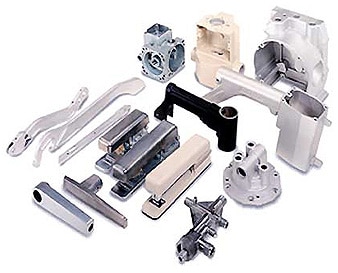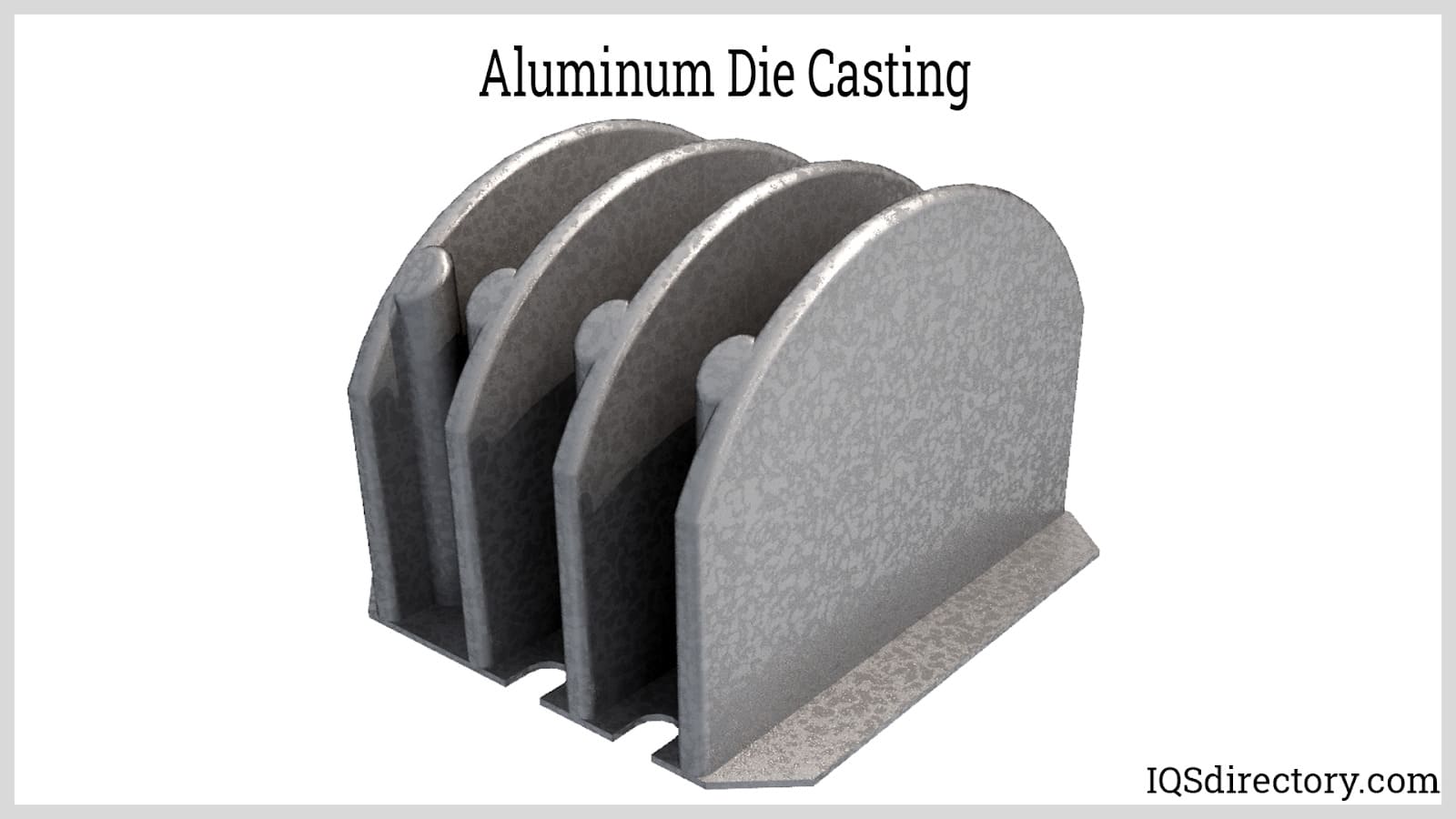Discovering the Conveniences and Practical Use Light Weight Aluminum Castings in Today's Market
Light weight aluminum castings have become progressively relevant in various sectors because of their distinct features. Their light-weight nature and resistance to rust make them appropriate for requiring applications. In addition, the superior strength-to-weight proportion uses substantial advantages in layout and production. As markets continue to discover their potential, the complete extent of aluminum spreadings' applications and benefits continues to be to be fully uncovered. What lies in advance for this versatile product?
The Lightweight Advantage of Aluminum Castings
Although many materials are made use of in manufacturing, aluminum castings attract attention largely as a result of their lightweight properties. This particular makes aluminum spreadings an eye-catching choice for numerous industries, particularly in aerospace and auto applications, where weight decrease is vital for enhancing gas effectiveness and performance. The light-weight nature of aluminum permits producers to create parts that are less complicated to install and deal with, ultimately lowering labor prices.
Moreover, the capacity to produce intricate forms without significant weight penalties makes it possible for developers to innovate while preserving architectural honesty. Aluminum spreadings can efficiently replace much heavier products, resulting in considerable financial savings in delivery and operational costs. Their light-weight advantage also contributes to boosted product long life, as lighter components usually cause decreased wear and tear on machinery. In general, the lightweight residential properties of light weight aluminum castings give manufacturers with an one-upmanship, cultivating improvements in product style and effectiveness across different markets.

Outstanding Corrosion Resistance
Light weight aluminum spreadings possess an all-natural resistance to oxidation, which greatly improves their durability in various environments. This inherent home not just adds to their durability however additionally aligns with the light-weight benefit that aluminum provides. As an outcome, aluminum spreadings are significantly acknowledged for their outstanding rust resistance in many applications.

Naturally Resistant to Oxidation
One of the standout qualities of aluminum castings is their outstanding deterioration resistance, which originates from a natural oxidation process. When exposed to air, aluminum reacts to develop a slim, safety layer of aluminum oxide. This layer acts as a barrier versus additional oxidation and safeguards the underlying steel from corrosive components such as dampness and salts. Unlike other metals, this oxide layer is self-repairing; if damaged, it swiftly reforms when exposed to air. This unique property boosts the longevity of aluminum castings in various atmospheres, making them suitable for applications in sectors such as aerospace, auto, and marine. The natural resistance to oxidation considerably decreases upkeep prices and enhances the integrity of aluminum castings in requiring conditions.
Light-weight Toughness Benefit
The lightweight nature of light weight aluminum castings contributes substantially to their sturdiness, making them a beneficial option in numerous industries. This outstanding toughness is greatly credited to light weight aluminum's inherent resistance to rust, which is enhanced additionally via anodizing and various other surface treatments. Unlike lots of metals, aluminum does not rust; instead, it creates a safety oxide layer that guards it from ecological damages. This property is especially valuable in industries such as automotive and aerospace, where weight decrease is essential without jeopardizing toughness. In addition, the longevity of aluminum spreadings minimizes upkeep expenses and substitutes, providing financial benefits over time. Their light-weight resilience and corrosion resistance placement light weight aluminum spreadings as a premium material for contemporary manufacturing applications.

Superior Strength-to-Weight Proportion
An amazing characteristic of aluminum castings is their remarkable strength-to-weight proportion, that makes them extremely desirable in numerous applications. This innate building allows aluminum spreadings to endure considerable anxiety while staying lightweight, an important consider markets such as aerospace, auto, and manufacturing. Designers commonly choose aluminum castings for parts that require both toughness and decreased weight, enhancing gas effectiveness and efficiency.
The high strength-to-weight proportion also helps with the design of intricate shapes and frameworks, making aluminum spreadings versatile for complicated applications. The capacity to preserve structural integrity under challenging problems warranties long life and reliability in items, from aircraft structures to automotive components. This advantage adds to the growing pattern of making use of light weight aluminum spreadings in cutting-edge designs, inevitably leading to enhanced capability and effectiveness throughout diverse markets. The premium strength-to-weight proportion of light weight aluminum spreadings positions them as a critical product in modern-day engineering and manufacturing.
Cost-Effectiveness in Production
Cost-effectiveness in light weight aluminum spreading manufacturing is mostly achieved with reduced product waste and effective manufacturing procedures. By maximizing designs and using sophisticated strategies, manufacturers can reduce excess material usage while preserving top quality standards. This approach not just lowers manufacturing expenses but also contributes to much more lasting methods within the industry.
Lowered Material Waste
Lowering material waste in aluminum casting processes substantially enhances production efficiency. By optimizing the design and production techniques, business can minimize excess scrap and enhance source utilization. This decrease in waste not only lowers product expenses yet additionally adds to an extra sustainable manufacturing design. The capability to reuse aluminum additional assistances cost-effectiveness, allowing producers to recover and reuse materials without jeopardizing quality. As the sector increasingly focuses on sustainability, decreased material waste aligns with environmental goals while at the same time boosting profitability. Ultimately, reliable usage of basic materials strengthens the affordable position of services out there, making light weight aluminum spreadings a favorable option in numerous applications. The tactical approach to minimizing waste mirrors a dedication to both financial and environmental duty.
Reliable Manufacturing Processes
While conventional manufacturing procedures can incur substantial expenses, light weight aluminum spreading offers a more effective option that boosts overall manufacturing productivity. This technique decreases product waste and enables accurate control over the manufacturing procedure, resulting in reduced labor and operational expenses. The capacity to create complicated forms with fewer actions better streamlines manufacturing, adding to shorter preparations. Additionally, aluminum's light-weight nature and exceptional thermal conductivity allow for power financial savings during manufacturing and in the last application. By making use of modern spreading innovations, makers can achieve higher throughput without compromising high quality. Light weight aluminum casting stands out as a cost-effective service, making it an attractive choice for businesses aiming to enhance their production processes in today's affordable market.
Adaptability Throughout Industries
Aluminum spreadings demonstrate remarkable adaptability across different markets, as they can be tailored to satisfy details needs and applications. In the automobile market, light weight aluminum spreadings are used in engine blocks, transmission real estates, and wheels, supplying lightweight yet long lasting services that boost fuel efficiency. The aerospace industry likewise takes advantage of aluminum castings, using them in architectural components and engine components as a result of their strength-to-weight ratio.
In the durable goods industry, manufacturers employ light weight aluminum spreadings for items ranging from pots and pans to furniture, offering both visual allure and performance. The electronic devices sector uses aluminum castings for real estates and warm sinks, making sure efficient thermal monitoring. Furthermore, the building and construction field leverages aluminum spreadings for building elements and structural components, improving durability and layout adaptability. This broad applicability highlights aluminum spreadings as a crucial resource, fulfilling the varied demands of various markets while preserving high performance and dependability.
Sustainability and Environmental Influence
As industries significantly focus on sustainable practices, aluminum spreadings arise as a green selection due to their recyclability and low environmental footprint. Aluminum is among the most recycled materials internationally, with the capability to be repurposed numerous times without deterioration of high quality. This particular significantly minimizes the demand for resources and power intake linked with key aluminum manufacturing, which is energy-intensive.
In addition, aluminum castings add to light-weight designs, leading to sustain efficiency in transportation applications such as aerospace and automotive markets. Their toughness and resistance to rust expand product lifespans, even more decreasing click here for info waste and source use gradually. Many producers are embracing responsible sourcing and environmentally pleasant production approaches, enhancing the sustainability of light weight aluminum casting processes. Overall, aluminum spreadings represent a useful solution for organizations aiming to decrease their environmental effect while navigate here achieving efficiency and efficiency.
Advancements in Light Weight Aluminum Spreading Technologies
Current advancements in aluminum casting modern technologies have actually substantially enhanced the performance and top quality of manufacturing processes. Advancements such as 3D printing and progressed mold-making techniques have allowed suppliers to develop complex styles with decreased material waste. This shift not only boosts the accuracy of actors components however likewise shortens lead times, allowing for rapid prototyping and faster market access.
In addition, the unification of advanced computer simulations help in predicting potential defects throughout spreading, bring about higher-quality results (Wisconsin Aluminum Foundry). Using light-weight alloys has also added to the growth of more powerful, extra long lasting items, accommodating sectors ranging from vehicle to aerospace
In addition, automated spreading processes have actually emerged, minimizing human error and boosting production speed. Collectively, these technologies are changing the light weight aluminum casting landscape, driving higher competition and sustainability in production. As markets proceed to progress, these technologies will certainly play an essential role in meeting future needs for efficiency and quality.
Often Asked Questions
Just How Do Aluminum Castings Contrast to Other Steels in Regards To Thermal Conductivity?
Light weight aluminum spreadings show remarkable thermal conductivity compared to several metals, such as steel and iron - Aluminum Castings. Their lightweight nature and efficient warmth circulation make them optimal for applications requiring effective thermal administration in various sectors
What Are the Common Issues Found in Light Weight Aluminum Castings?
Common problems in aluminum spreadings include porosity, shrinkage, inclusions, and surface area abnormalities. These concerns typically arise from improper cooling prices, inadequate mold style, or contaminations, impacting the general top quality and efficiency of the last item.
Can Light Weight Aluminum Castings Be Recycled, and How?
Light weight aluminum castings can be reused efficiently. The process involves collecting, melting, and reforming the aluminum, which reduces waste and saves sources. This recycling adds to sustainability while keeping the product's buildings for future use.
What Are the Normal Lead Times for Light Weight Aluminum Spreading Manufacturing?
Usually, lead times for light weight aluminum casting production range from 2 to six weeks, depending on factors such as complexity, tooling requirements, and production quantity. Performance can improve with recognized provider connections and optimized manufacturing processes.
How Does the Surface End Up Affect Light Weight Aluminum Casting Performance?
The check that surface coating significantly affects light weight aluminum casting performance by influencing corrosion resistance, visual top quality, and friction features. A smoother coating boosts sturdiness and performance, while a rougher texture can enhance adhesion for subsequent finishes or therapies.
Lots of products are utilized in production, light weight aluminum spreadings stand out mostly due to their light-weight homes. When revealed to air, aluminum reacts to form a thin, protective layer of aluminum oxide. Cost-effectiveness in light weight aluminum casting production is mainly attained through reduced material waste and reliable production processes. Decreasing product waste in aluminum casting processes substantially improves manufacturing performance. Ultimately, reliable use of raw products reinforces the affordable position of organizations in the market, making light weight aluminum castings a desirable choice in numerous applications.